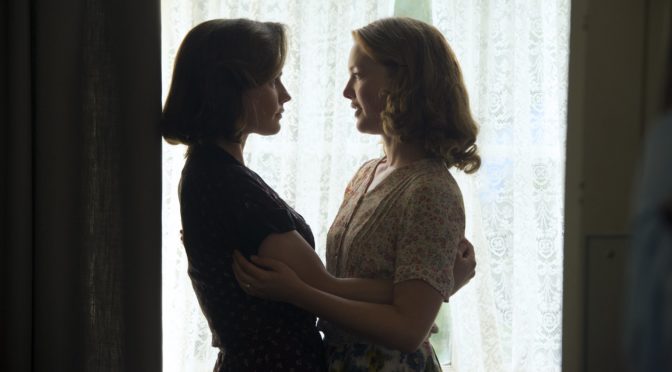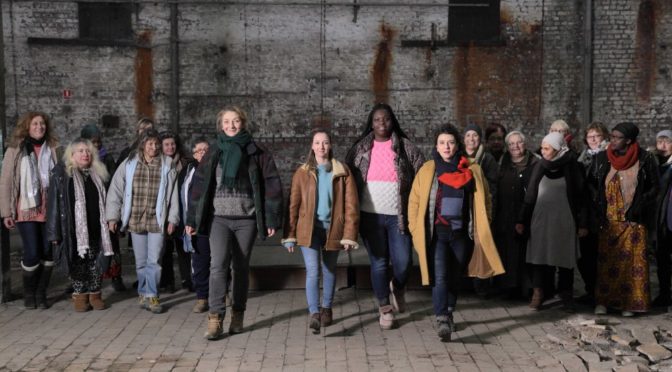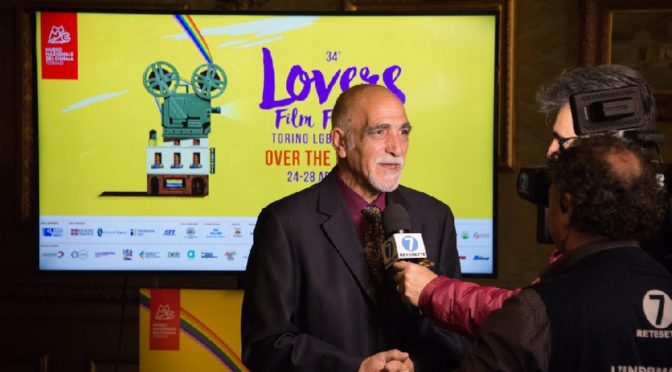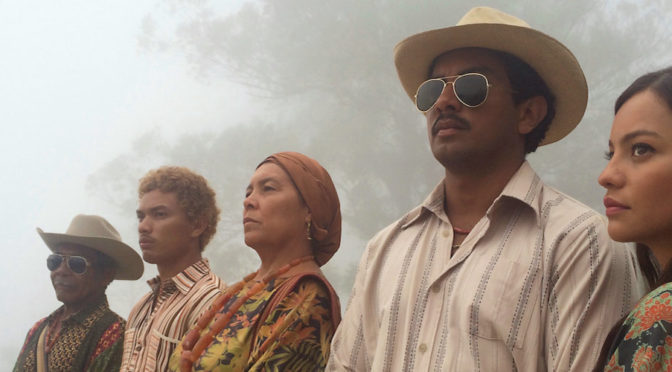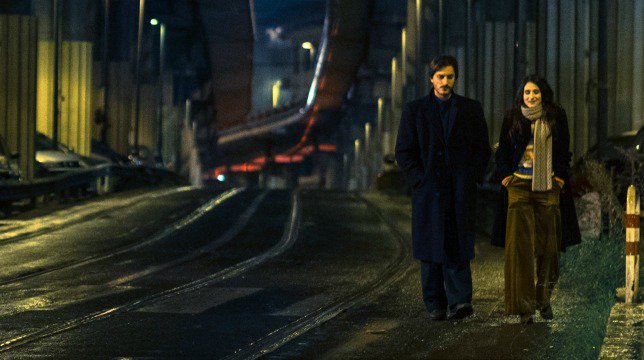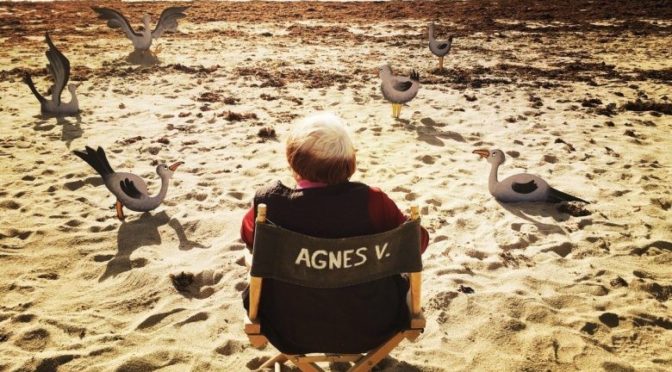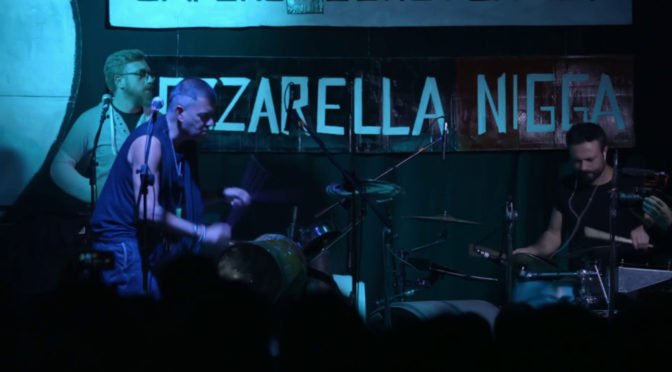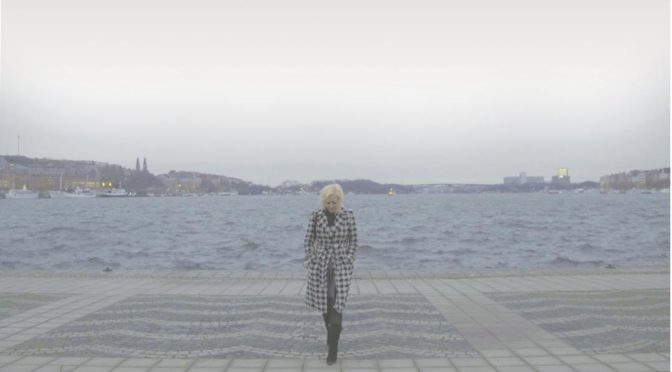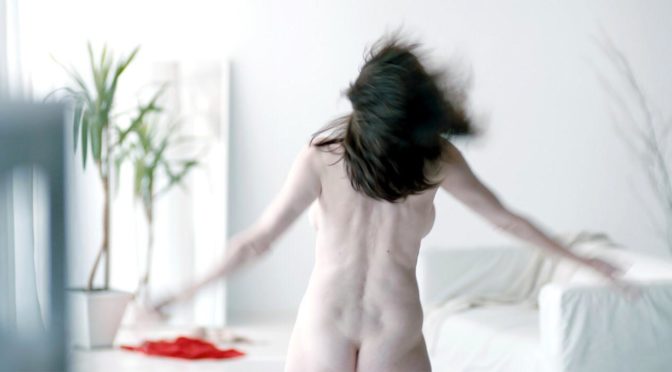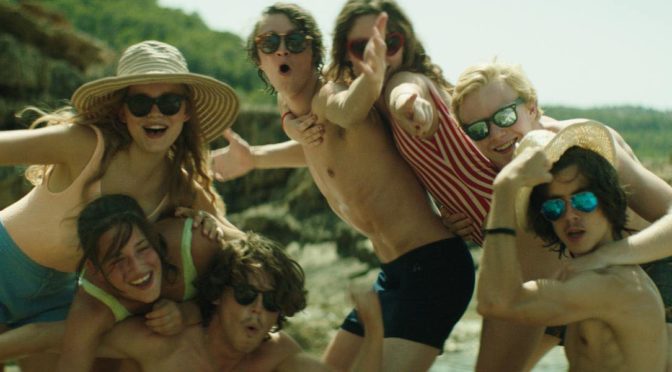Scritto, diretto e interpretato da Mark Blane, con l’aiuto registico di Ben Mankoff, Cubby viene proposto in prima visione mondiale al 34° Lovers Film Festival in All the Lovers, la sezione dei lungometraggi in concorso. Registi e delegazione del film sono presenti in sala e, visibilmente emozionati, rispondono ad alcune domande sulle dinamiche che hanno contribuito alla realizzazione del film.
Continua la lettura di “CUBBY” DI MARK BLANE E BEN MANKOFFArchivi tag: in evidenza
“TELL IT TO THE BEES” DI ANNABEL JANKEL
Un’antica leggenda scozzese racconta di come le api possano essere le nostre migliori confidenti, allorché, svelando un segreto a qualcuno, questo possa rivelarsi pericoloso. Confida un segreto alle api e queste non voleranno mai più via, ma rimarranno per sempre testimoni silenziose del nostro passaggio.
Continua la lettura di “TELL IT TO THE BEES” DI ANNABEL JANKEL“Butterfly” di Alessandro Cassigoli e Casey Kauffman
Gli antichi greci vedevano i loro migliori atleti come degli eroi, elogiavano ed elevavano quegli uomini rispetto alla massa, e gli artisti li cantavano in ogni modo: dall’esaltazione della perfezione dei corpi, rappresentata nelle statue, all’elogio delle loro gesta sportive nei componimenti, come quelli delle Olimpiche di Pindaro. Questa esaltazione cresceva con la consacrazione dell’atleta nella vittoria in una delle discipline sportive praticate proprio nelle Olimpiadi, manifestazione giunta fino a noi e alla quale, tutt’oggi, il mondo intero conferisce enorme importanza.
Continua la lettura di “Butterfly” di Alessandro Cassigoli e Casey Kauffman“Les Invisibles” di Louis-Julien Petit
L’ultimo film di Louis-Julien Petit, distribuito in Italia da Teodora Film, è tratto dal documentario Femmes invisibles: Survivre dans la rue realizzato per la televisione francese da Claire Lejeunie dopo i cinque mesi trascorsi a stretto contatto con donne senzatetto, che in Francia rappresentano il 40% delle persone che si trovano a vivere per strada. Lejeunie ha anche scritto un libro in cui ha raccolto le sue impressioni ed i racconti delle donne con cui ha interagito. Sur la route des invisibles: Femmes dans la rue è il titolo del libro, da cui Petit ha tratto ispirazione per scrivere la sceneggiatura del suo film, collaborando proprio con Lejeunie e con Marion Dussot.
Continua la lettura di “Les Invisibles” di Louis-Julien PetitCONFERENZA STAMPA DI APERTURA – 34° LOVERS FILM FESTIVAL
Resistere, mostrare, esistere. È su questa equazione che si è aperta la conferenza stampa del 34° Lovers Film Festival, una delle più longeve rassegne cinematografiche a tematica LGBTQI di tutto il mondo. Con 102 titoli in programma, 28 paesi rappresentati, 50 anteprime nazionali e 10 mondiali, la kermesse curata da Irene Dionisio si presenta – ancora una volta – come una delle più interessanti e innovative manifestazioni culturali del panorama torinese.
Continua la lettura di CONFERENZA STAMPA DI APERTURA – 34° LOVERS FILM FESTIVALFLORENCE KOREA FILM FESTIVAL
Report di ARIANNA VIETINA
Si è svolto a Firenze dal 21 al 29 marzo il Florence Korea Film Fest, punto di riferimento per gli appassionati del cinema coreano in Italia. Questa manifestazione punta i riflettori su una cinematografia sempre più studiata e apprezzata in Occidente, grazie soprattutto all’ultima New Wave. Autori come Park Chan-wook, Kim Ki-Duk, Hong Sang-soo e Bong Joon-ho hanno reso il cinema coreano diffuso e popolare in tutto il mondo, grazie all’attenzione loro riservata dai festival internazionali che per primi si sono accorti della loro rilevanza, tra cui la Mostra del Cinema di Venezia, e i festival di Cannes e Berlino. Perché il cinema coreano contemporaneo è così interessante anche per gli spettatori occidentali?
Continua la lettura di FLORENCE KOREA FILM FESTIVAL“ORO VERDE – C’ERA UNA VOLTA IN COLOMBIA” di ciro guerra e cristina gallego
Ricorda insieme Shakespeare, Il Padrino e la tragedia greca questo Oro verde: c’era una volta in Colombia. Ma leviamoci subito il sassolino dalla scarpa: nonostante le pur ammissibili analogie tra questo film e quello di Leone cui si rimanda nella traduzione italiana, la nostra distribuzione si è macchiata per l’ennesima volta di tradimento nei confronti del titolo originale, Birds of Passage, che vorrebbe raccontare, più che banalmente il plot, metaforicamente lo spirito dei personaggi coinvolti nella vicenda: uccelli di passaggio, per l’appunto, e non gangster del contrabbando.
Continua la lettura di “ORO VERDE – C’ERA UNA VOLTA IN COLOMBIA” di ciro guerra e cristina gallego“DOVE BISOGNA STARE” DI DANIELE GAGLIANONE
L’ultimo documentario di Daniele Gaglianone è stato presentato per la sezione TFFDOC/FUORI CONCORSO il 1 dicembre al Cinema Massimo, in una giornata per nulla casuale. Il film è un’importante testimonianza, infatti, della situazione ormai tragica venutasi a creare in Italia attorno al fenomeno della migrazione, ma il regista e tre delle protagoniste, presenti in sala, ci hanno tenuto a specificare che nel tempo passato dalla fine delle riprese la situazione è purtroppo molto peggiorata. Proprio in questi giorni, a partire dall’inizio del mese, il DL Sicurezza e Immigrazione sta lasciando per strada rifugiati in possesso di permesso di soggiorno umanitario, la cui regolamentazione è cambiata per via del Decreto Legge menzionato, non garantendo più l’accoglienza a chi in precedenza ne aveva diritto.
Continua la lettura di “DOVE BISOGNA STARE” DI DANIELE GAGLIANONE
“RICORDI?” DI VALERIO MIELI
“MIRAI” DI MAMORU HOSODA
Mamoru Hosoda, regista di successo nell’odierno panorama del cinema di animazione giapponese, con il suo ultimo lavoro intitolato Mirai ci porta alla scoperta di una vicenda quotidiana e familiare: un film che ruota attorno alle vicende di un bambino alle prese con la nuova sorellina, il cui nome dà titolo e significato al film.
Continua la lettura di “MIRAI” DI MAMORU HOSODARicordo di Agnès Varda
Nella notte tra giovedì 28 e venerdì 29 marzo è venuta a mancare Agnès Varda. Nata in Belgio da madre francese e da padre rifugiato greco, Varda si laurea alla Sorbona per poi intraprendere lo studio della storia dell’arte e della fotografia. Dopo aver lavorato inizialmente come fotografa di matrimoni e poi come fotoreporter, la sua carriera cinematografica – lunga quasi sessantacinque anni – inizia con un film tradizionalmente ritenuto un precursore della Nouvelle Vague, e cioè La Pointe Courte (1955). Il film fu montato da Alain Resnais e Henri Colpi, esponenti, insieme a Varda, della Rive Gauche della Nouvelle Vague, ed è esemplificativo del suo modo di intendere il cinema: trovandosi in un borgo di pescatori sulla costa Sud della Francia a fare delle foto, Varda rimase ispirata dagli scatti, scrisse una sceneggiatura e girò il film senza alcuna esperienza precedente ed avendo visto, per sua stessa ammissione, soltanto una ventina di film prima di allora. Fotografia e cinema sono sempre stati per Varda linguaggi costantemente in dialogo. Come dichiarò nel 2015 alla rivista Sight & Sound: “Faccio foto o giro film. O metto film nelle foto, o foto nei film”.
Continua la lettura di Ricordo di Agnès Varda“A MOZZARELLA NIGGA” DI DEMETRIO SALVI
Il Torino Underground Cinefest, giunto alla sua sesta edizione, è un festival che dimostra quanto si possa riuscire a fare cinema anche senza grandi produzioni alle spalle: il documentario A Mozzarella Nigga di Demetrio Salvi si colloca proprio in una dimensione povera di strumenti ma ricca di contenuti. La scelta produttiva, ovvero quella di raccontare una storia con un budget davvero irrisorio, di soli mille euro, è frutto di una tensione artistica forte, tesa alla libertà: mettere a disposizione i propri (pochi) soldi vuol dire essere liberi di mostrare ciò che più si desidera, senza limiti, costrizioni e obblighi imposti da una produzione.
Continua la lettura di “A MOZZARELLA NIGGA” DI DEMETRIO SALVI“GRIZZLY MAN” DI WERNER HERZOG
Parlare di Werner Herzog è facile e difficile allo stesso tempo. Facile perché il cineasta tedesco è tra i più grandi registi contemporanei: uomo affascinante e integerrimo, su Herzog si può dire e raccontare molto, tanto che la sua persona appare ai cinefili più giovani come un personaggio memorabile di un film, più che come l’uomo dietro la macchina da presa . D’altronde è stato lo stesso Herzog a spingere verso questa presentazione di sé come figura iconica e leggendaria, rappresentandosi nei suoi propri film come un Caronte delle anime mostruose, apparendo cioè nella messinscena dei suoi documentari accanto, più che di fronte, ai personaggi quasi mitologici che ha saputo far parlare. Eppure, nonostante questa proliferazione dei discorsi possibili su Herzog e, quindi, nonostante la facilità con cui si può pescare dal cilindro della personalità e dalla storia cinematografica del regista un discorso, diciamo così, “valido” ecco, nonostante tutto, parlare di Werner Herzog risulta estremamente difficile e complesso.
Continua la lettura di “GRIZZLY MAN” DI WERNER HERZOG“Diamantino” di Gabriel Abrantes e Daniel Schmidt
Se quello che state cercando è un’opera sul calcio, allora Diamantino non è il film che fa per voi. Lo sport, all’interno del film, non è altro un contorno che permette ai registi, Gabriel Abrantes e Daniel Schmidt, di giocare con situazioni assurde e stravaganti. Diamantino – vincitore della Settimana della Critica a Cannes 2018 – assomiglia a un B movie, a metà strada tra il racconto sportivo e lo sci-fi, ma presenta diversi piani di lettura; e forse è proprio questo l’elemento che ha maggiormente colpito la giuria della rassegna francese.
Continua la lettura di “Diamantino” di Gabriel Abrantes e Daniel Schmidt“Seder-masochism” di Nina Paley
Nina Paley è un’attivista politica statunitense, femminista e di origine ebraiche: tutti aspetti che confluiscono in Seder-Masochism, opera semi-autobiografica in cui la regista affronta, sotto forma di musical, eventi tratti dal Libro dell’Esodo.
Continua la lettura di “Seder-masochism” di Nina Paley“EVERYTHING IS BETTER THAN A HOOKER” DI OVIDIE
Quando si parla di Svezia, si parla della madre della Scandinavia. Si parla della nazione che ha guidato il nevoso settentrione, l’apice benestante della civiltà occidentale. È lo Stato Sociale per eccellenza, il modello da seguire. In Scandinavia un uomo che uccide settantasette persone (vedi Anders Breivik) è condannato a ventuno anni di carcere. È un sistema da emulare: hanno le scuole migliori, gli ospedali migliori, gli stipendi migliori… È una favola quasi utopica, sembra che nessuno stia male in Svezia. Ma Ovidie (che aprì IL Fish & Chips Festival nel 2018), l’occhio dietro la cinepresa di Everything is Better than a Hooker, vuole raccontare un’altra Svezia.
Continua la lettura di “EVERYTHING IS BETTER THAN A HOOKER” DI OVIDIE“BEDBUGS” DI JAN HENRIK STAHLBERG
Rocky (Jan Henrik Stahlberg, regista e sceneggiatore del film) è un consumato Don Giovanni di mezz’età che vive con il suo cane –ovviamente un segugio – in un appartamento bohémien con poster di Mirò alle pareti, legge Philip Roth prima di addormentarsi, frequenta palestre e centri benessere dove mette in atto tecniche di seduzione obsolete e imbarazzanti. Thorben (Franz Rogowsk) è un giovane socialmente disadattato a causa dell’ossessione per il sesso e – nello specifico – per il porno, che vede nella donna una semplice valvola di sfogo per i propri impulsi, e i cui approcci con le donne sono aggressivi e disumani al punto di costargli una denuncia per tentato stupro.
Continua la lettura di “BEDBUGS” DI JAN HENRIK STAHLBERG“THE ARTIST AND THE PERVERT” DI BEATRICE BEHN E RENÉ GEBHARDT
Georg-Fredrich Haas, per chi non lo sapesse, è uno dei più influenti compositori del XXI secolo, uno dei pochi musicisti che vede innalzare una propria opera a capolavoro mentre è ancora in vita. È un artista sofisticato ma non intellettuale, che beve venti caffè mentre lavora quindici ore al giorno nel suo appartamento a New York.
Continua la lettura di “THE ARTIST AND THE PERVERT” DI BEATRICE BEHN E RENÉ GEBHARDT“TOUCH ME NOT” DI ADINE PINTILIE
Il corpo, l’imperfezione, il piacere e il rapporto che ognuno ha con la propria sessualità.
Sin dalla prima lunga carrellata su un (villoso) corpo maschile nudo che apre il film, la giovanissima regista rumena suggerisce allo spettatore quali saranno i temi trattati, rimaneggiati, esplorati e combinati durate le due ore successive.
“WE” DI RENE HELLER
We è la storia di otto ragazzi, di un paese di campagna al confine, di un’età che è un confine: un solo passo per entrare nel mondo degli adulti. Racconta quella fase della vita in cui si sa tutto, in cui non si sa niente, in cui, forse, alcuni di loro sanno anche troppo.
Continua la lettura di “WE” DI RENE HELLER

